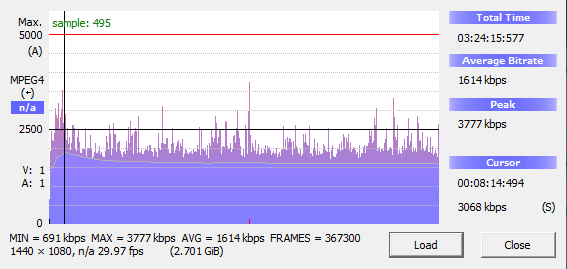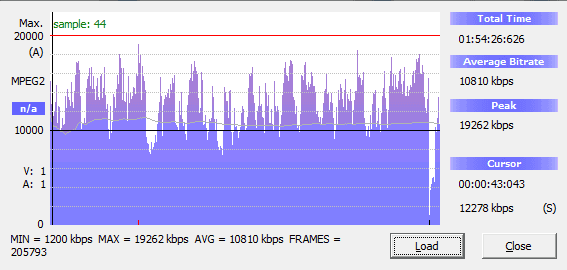You can really measure like that... if it was uncompressed 5mb/s or even 8mb/s would be really low, but DISH is using 8PSK and MPEG4 so that a 5 MB/s stream is really equal to a 12 mb/s uncompressed stream. (These numbers are not exact but is meant to show you the benefits of MPEG4.

A few minor corrections. An uncompressed 1080i HD video stream actually runs at about 1.5 Gbits/s. An uncompressed 5.1 HD audio stream could easily be 12 Mbit/s. There are a variety of compression formats used to take these exorbitant rates down to something reasonable for current distribution technologies.
For HD video DN exclusively uses H.264 compression (sometimes ambiguously referred to here as MPEG-4, as there is more than one MPEG-4 video compression format). H.264 is about 2X more efficient than MPEG-2 for the same video quality. OTA uses MPEG-2 exclusively and DN previously used this format for HD video. I haven't surveyed audio compression on DN's HD channels, but what I've seen has been Dolby Digital (DD) at 384 kbit/s.
In terms of bit rates in the US, the FCC allows an OTA channel to use a maximum of around 19 Mbits/s. Many share this across multiple subchannels, but some stations provide a single HD channel at this rate. With DD audio and padding this easily leaves 18 Mbit/s for MPEG-2 video. That's kind of a reference standard, but higher rates are available. Blu-ray can reach around 40 Mbit/s (not talking 3D) and some satellite backhauls I've seen hit about 80 Mbit/s for a single HD video stream. OTA maximum video rates look pretty good, but the two latter formats are quite a bit better, with the last being spectacular.
The 2X rule of thumb I quoted earlier is generally accepted in the industry. However I've done some very careful and tedious comparisons of the latest H.264 and MPEG-2 encoders and believe the true number to be less than 1.8X. Regardless, an H.264 HD video stream needs to be at least 9 Mbits/s to match the OTA single HD channel reference. Many of the premium channels are fed to DN and other providers at around this rate for H.264, or double for MPEG-2.
Subtracting out the audio data rates, most of the DN HD channels clock in less than 4 Mbit/s for the video stream. However these rates are averages only. DN multiplexes several HD channels per transponder, and their compressors can dynamically allocate higher or lower rates for each channel based on moment to moment requirements. A static scene on one channel would require far less than a high action scene on another. Still the data rates do not appear to change drastically and the average rate does appear to be a reasonable predictor of video quality.
Furthermore DN reduces the resolution of a number of their HD channels from 1920x1080 to 1440x1080. This leads to a softer picture more amenable to higher compression. Regardless, a 4 Mbit/s HD video rate is a joke when compared to the distribution feed of 9-10 Mbit/s for H.264, or 15-18 Mbit/s for MPEG-2.



